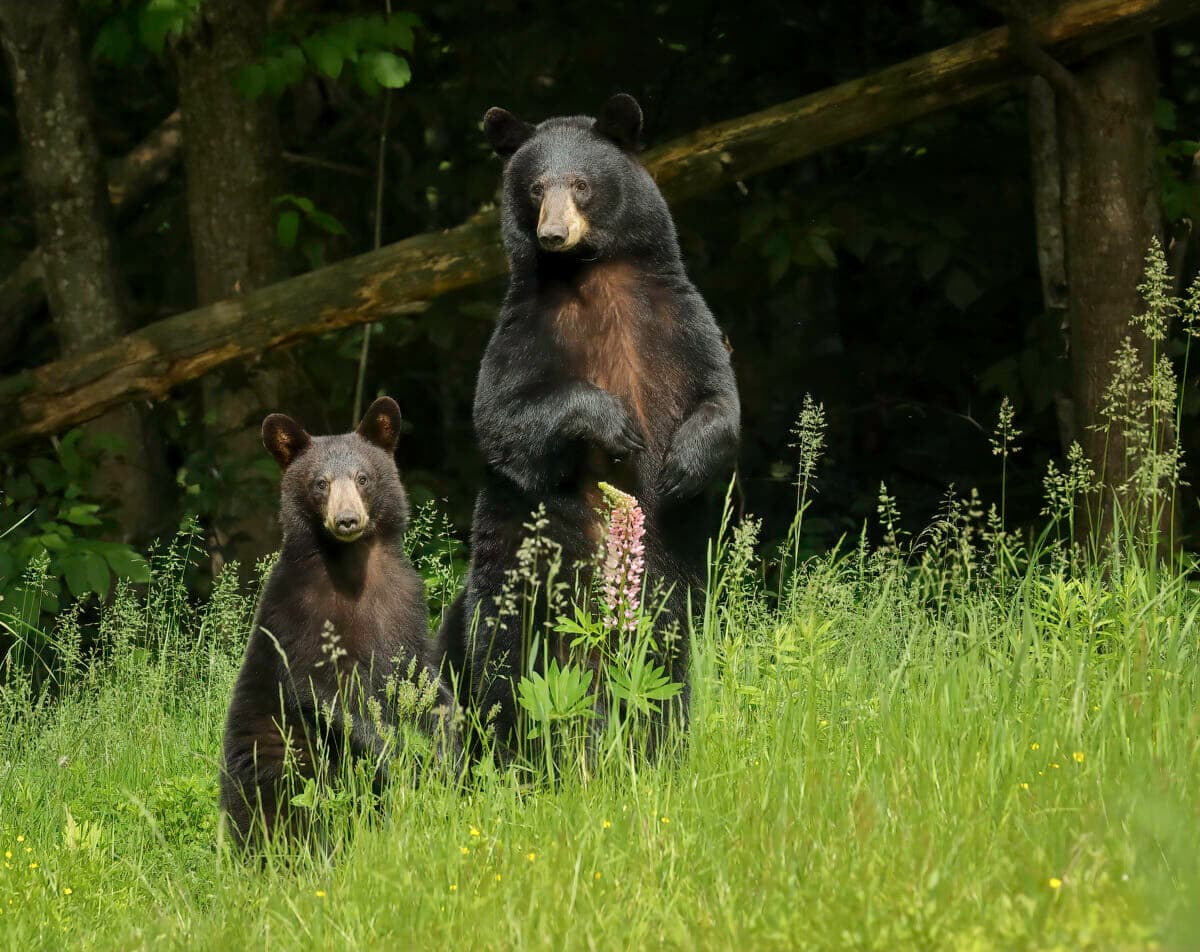

Every AMC-managed backcountry site in the White Mountains provides metal bear boxes for campers to store their food.
They’re out there in the Northeast: black bears. Lots of them, including in popular outdoor destinations like the White Mountains of New Hampshire, where an uptick of bear activity has led to multiple campground closures and posted trail warnings over the past few years.
Thing is, it’s not the bears that are the problem—it’s the people. Specifically, careless camper behavior has allowed bears to find, devour, and develop a hankering for unsecured human food. And once bears acquire a taste for such fare, they are much more likely to come back for more, putting them—and campers, hikers, and backpackers—at risk. But there are ways to prevent this.
CAN IT
Bear-resistant food containers, or BRFCs, are impenetrable food storage cylinders that are too large and round for bears to get their jaws around. With locking lids that even the craftiest claws can’t crack, BRFCs form the ultimate defense against ursine invaders; simply secure your food inside and place your BRFC at least 100 yards from your camp at night.
The drawbacks? BRFCs are bulky, heavy, challenging to pack, and don’t get any lighter or smaller as you eat down your food supply. (Though they do make a convenient seat around camp.)
Most BRFCs hold between 600 and 700 cubic inches and weigh up to 3 pounds. That’s usually enough space to feed two people for two to three days, depending on how well you pack your food. Only a limited number of niche manufacturers produce BRFCs; most common are the Backpacker’s Cache Model 812 ($75; amazon.com; backpackerscache.com), BearVault BV500 ($80; bearvault.com), and Counter Assault Bear Keg ($80; counterassault.com). On the lighter (and pricier) end of the spectrum are carbon-fiber options from Wild Ideas, including the Expedition MKII ($349; wild-ideas.net), which holds 900 cubic inches and weighs 2 pounds, 4 ounces.
Alternatively, some National Forest and National Park visitor centers rent BRFCs, sparing you the expense of purchasing one; in New Hampshire, for example, you can borrow a BRFC for free from any White Mountain National Forest visitor center.
SACK IT
Meet the Ursack ($90 to $140; ursack.com), a lightweight and indestructible bag that uses Kevlar—the same material in bulletproof vests—to keep gnashing teeth and claws at bay. Since its introduction two decades ago, this one-of-a-kind product has gone through several iterations and is now fully certified for bear resistance by the Interagency Grizzly Bear Committee (IGBC), the organization that tests fully loaded containers by giving them to bears in captivity to see if they can get inside.
The Ursack is sealed shut by a virtually unbreakable drawstring, which you then attach to a tree or other immovable object. Its drawbacks? Your food can get completely smushed should a bear attempt to get inside, small punctures (less than a quarter inch) are possible, and the seams aren’t fully waterproof and can leak (though you can seal them with a waterproof product like Gear Aid Seam Grip). A range of sizes are available; the Major XL is one of the largest with 925 cubic inches of storage at just 8.8 ounces.